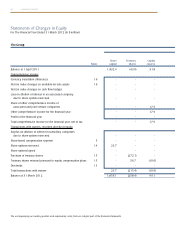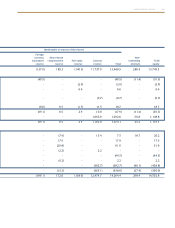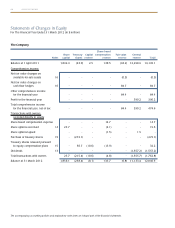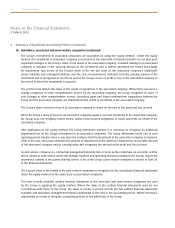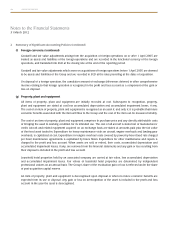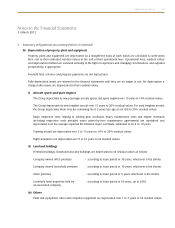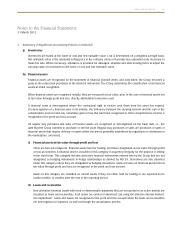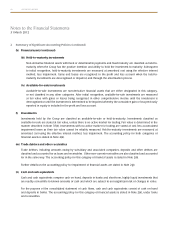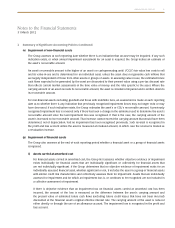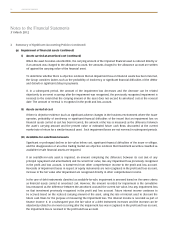Singapore Airlines 2012 Annual Report Download - page 104
Download and view the complete annual report
Please find page 104 of the 2012 Singapore Airlines annual report below. You can navigate through the pages in the report by either clicking on the pages listed below, or by using the keyword search tool below to find specific information within the annual report.
102 SINGAPORE AIRLINES
Notes to the Financial Statements
31 March 2012
2 Summary of Significant Accounting Policies (continued)
(b) New and revised standards (continued)
FRS 111 Joint Arrangements and Revised FRS 28 Investments in Associates and Joint Ventures (continued)
FRS 111 classifies joint arrangements either as joint operations or joint ventures. Joint operation is a joint arrangement
whereby the parties that have joint control of the arrangement have rights to the assets and obligations for the
liabilities relating to the arrangement whereas joint venture is a joint arrangement whereby the parties that have joint
control of the arrangement have rights to the net assets of the arrangement. FRS 111 requires the determination of
joint arrangement’s classification to be based on the parties’ rights and obligations under the arrangement, with the
existence of a separate legal vehicle no longer being the key factor. FRS 111 disallows proportionate consolidation
and requires joint ventures to be accounted for using the equity method. The revised FRS 28 was amended to
describe the application of equity method to investments in joint ventures in addition to associates. The adoption of
FRS 111 and the revised FRS 28 will not affect the Group as the Group does not apply proportionate consolidation
for its joint ventures.
FRS 112 Disclosure of Interests in Other Entities
FRS 112 is effective for financial periods beginning on or after 1 January 2013.
FRS 112 is a new and comprehensive standard on disclosure requirements for all forms of interests in other entities,
including joint arrangements, associates, special purpose vehicles and other off balance sheet vehicles. FRS 112
requires an entity to disclose information that helps users of its financial statements to evaluate the nature and risks
associated with its interests in other entities and the effects of those interests on its financial statements. As this is
a disclosure standard, it will have no impact to the financial position and financial performance of the Group when
implemented in 2013.
(c) Basis of consolidation
The consolidated financial statements comprise the separate financial statements of the Company and its subsidiary
companies as at the end of the reporting period. The financial statements of the subsidiary companies used in the
preparation of the consolidated financial statements are prepared for the same reporting date as the Company.
Consistent accounting policies are applied to like transactions and events in similar circumstances. A list of the
Group’s subsidiary companies is shown in Note 23 to the financial statements.
All intra-group balances, transactions, income and expenses and unrealised profits and losses resulting from intra-
group transactions are eliminated in full.
Business combinations are accounted for by applying the acquisition method. Identifiable assets acquired and
liabilities and contingent liabilities assumed in a business combination are measured initially at their fair values at the
acquisition date. Acquisition-related costs are recognised as expenses in the periods in which the costs are incurred
and the services are received.
When the Group acquires a business, it assesses the financial assets and liabilities assumed for appropriate classification
and designation in accordance with the contractual terms, economic circumstances and pertinent conditions as at the
acquisition date. This includes the separation of embedded derivatives in host contracts by the acquiree.


